SOG & ScrOG - Cannabis Training Techniques For Heavier Yields
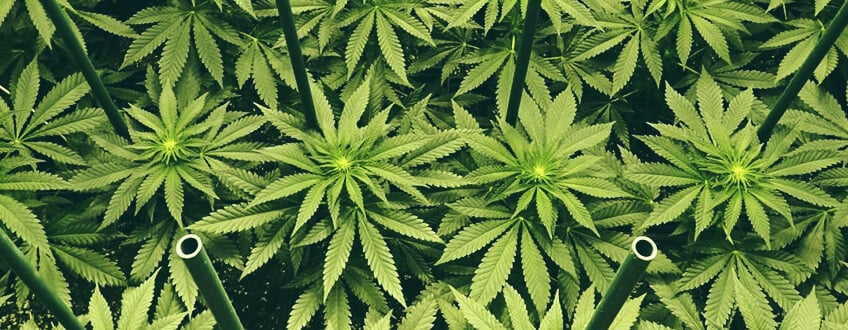
There are a number of techniques that can be used to maximise space efficiency during growth, and to increase harvests. Two popular ones are the sea of green (SOG) and screen of green (ScrOG) techniques. Each can be used to maximise yields over a given growing area. Autocorrect might hate them, but cannabis plants love SOG and ScrOG.
Contents:
PLANT HEALTH COMES FIRST
No matter which of the two you choose, it is important that your plants are vibrant and full of life from the start. This means setting them up in an environment that's ideal for cannabis growth. You'll have to choose the right growing medium and pot size, and you'll have to consider lighting, water pH, nutrients, temperature, and humidity, among other variables.
For example, both the mother plant from which you are taking clones and your cutting need to be happy and healthy. Once each of these factors is dialled in, healthy plants are yours to do with as you please.
-
SOG
Sea of green is a cannabis growing technique that sees many small plants grown in close proximity per square metre of space. The advantage of growing with this method is that plants spend less time in vegetation, while still producing as many bud sites per volume of space. With SOG grows, buds are ready sooner, which can result in an extra crop per year.
SOG is usually done using clones. This ensures all of the plants exhibit the same traits (growing speed, height, etc.) so your SOG will grow to have a nice even canopy. You can also grow from seeds, but it is important to use seeds from the same strain. Ideally, avoid long, lanky sativas. You want to keep your plants at the same level under your grow lights to ensure even growth.
-
SCROG
Screen of green is a plant training method with the same goals as SOG—to increase the yield per square metre at harvest time. However, far fewer plants are grown, and larger pots are used to accommodate larger root zones for larger plants. Even light distribution over a literal screen of green helps to develop an abundance of equally sized flowers from just a few plants.
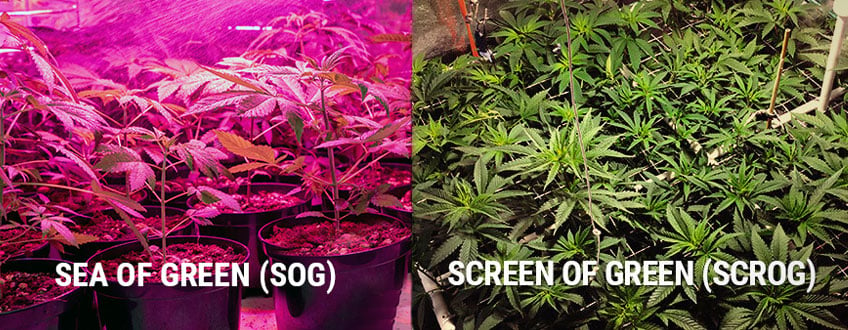
SCROG & LST
Cultivators often combine the ScrOG technique with low-stress training (LST)—a method that can further improve yields. Indeed, a ScrOG is really just a more elevated form of LST, involving a fixed lattice or screen as opposed to manually tying down shoots.
LST is particularly advantageous when growing indoors under spatial limitations. Artificial light has poor penetration compared to the sun, and the strength of light reduces with the inverse square of distance from the canopy. LST maximises yield per square metre by making efficient use of the lighting. When used together with a ScrOG, maximum yields will soon be yours!
Ready to elevate your training game? Download our Pro Growing Guide for expert LST, super-cropping, and defoliation techniques that sculpt an even canopy and multiply your harvest.
Free Advanced
Growing Guide!
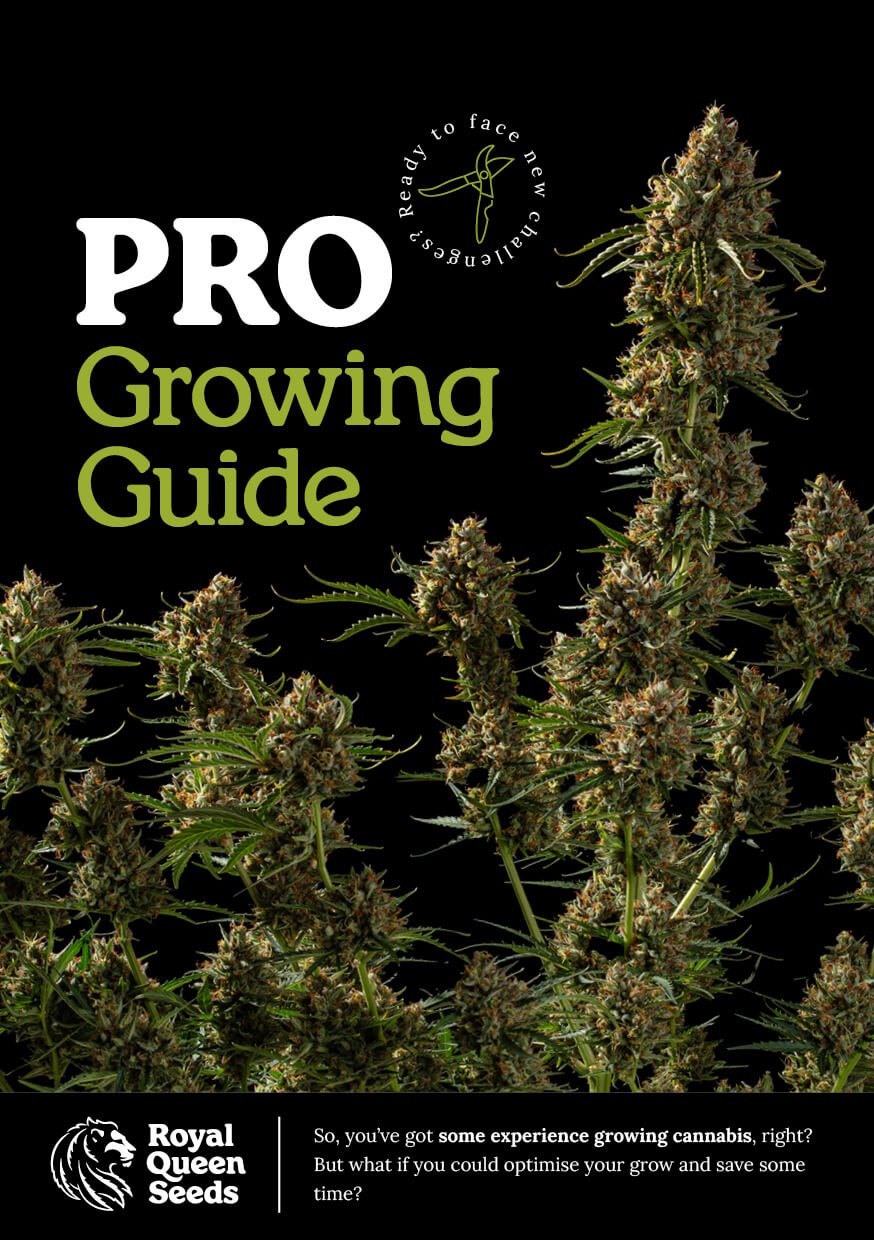
SCROG OR SOG?
SOG: Plants with few lateral branches are encouraged to grow a single predominant cola. Plants don’t require training and require little attention besides regular plant upkeep. Less time is spent per week training—as you would with larger plants—for similar end results.
ScrOG: This entails a mesh screen with large enough apertures through which to feed cannabis leaves and branches. This can be made from commercial fencing wire or a plastic trellis, or made from wire or string and fixed to a frame. The purpose of the screen is to continually tuck under new growth into a flat sheet. What would have been undeveloped lateral branches with barely developed buds become healthy, stout branches with plenty of light exposure and their own dense flowers.
EFFICIENT USE OF SPACE
SOG and ScrOG are ideal for growers with space restrictions, as minimal height is required and every square centimetre of floor area gets used efficiently. There is no need for as much grow space volume as there would be for an untrained plant to get just as heavy a yield. SOG produces large individual buds with no popcorn or poorly formed flowers due to lack of light.
Typically, the SOG technique encourages apical dominance to strengthen and enlarge the main flower cluster. The ScrOG method, however, discourages apical dominance to promote many similarly sized flower clusters.
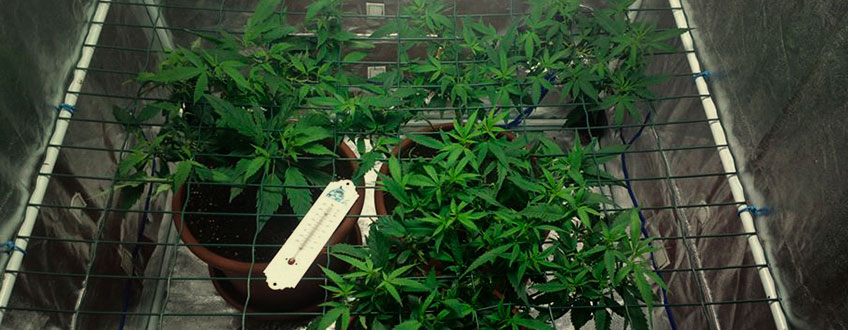
STRAIN SELECTION
Strain selection plays its part for efficient use of space.
SOG: Cultivars that tend to naturally produce a dominant central cola with minimal lateral branching are often used. Indicas and indica-dominant hybrids have this feature as part of their morphology. Once plants are of a certain height, usually 20–30cm tall, the 12-12 flip to the bloom cycle is made. Plants develop almost entirely as a single cola with lateral branches being reduced to single buds. Some individuals will initiate the entire grow starting from 12-12 so that only small plants develop.
ScrOG: Cultivars that naturally produce lots of bud sites take well to this technique. Sativas or sativa-dominant strains that have a lot of nodes have this feature as part of their morphology. These normally tall and branchy strains, whose lower buds may not develop fully if left to grow untrained, get light exposure to all the bud sites, which encourages larger bud growth. It isn’t absolutely necessary to grow sativas this way, as indicas respond just as well.
CONSIDER THE POT
Using the right pots for your SOG or ScrOG garden is super important to ensure the health of your plants and the best possible yields. As a general rule of thumb, you’ll never want to grow using pots of less than 3–4 litres, but keep reading for a more detailed look at what pots to use for SOG and SCROG.
SOG: Remember, when using SOG, you’ll be growing between 9–12 plants per m². For best results, you’ll need to make sure each one of these plants has enough soil to develop a healthy root system, and keep the plant from toppling over once it grows.
When growing 9–12 plants per m², you’ll be restricted to using pots with a diameter of between 20–30cm, which typically have a capacity of 7–11 litres. Using pots of this size is fine, but keep in mind that you’ll only be able to veg your clones for about 8 weeks without them becoming rootbound and stressed from the lack of space. If you want to keep your plants vegging for longer, you’ll need to invest in larger pots.
Some growers raise up to 25 plants per m² using SOG. When doing so, they cut down the time their plants veg, meaning they’ll harvest quicker. For such a high plant density, however, you’ll have to use smaller pots of about 5 litres.
SCROG: When growing with the ScrOG method, you have a bit more flexibility regarding the number of plants you choose to grow. If you plan to grow a single plant per m², you’ll need to use a pot of at least 20l. If you want to cut down the time it takes for you to harvest, you could grow 4 plants per m², with each plant growing in a 10l pot.
With ScrOG, there is really no firm rule on how many plants you can grow per m². It really depends on your goals, budget, and the amount of time you’re willing to dedicate to each harvest. Remember, no matter what grow technique you use, you’ll always want to give your plants as much room to grow as possible.
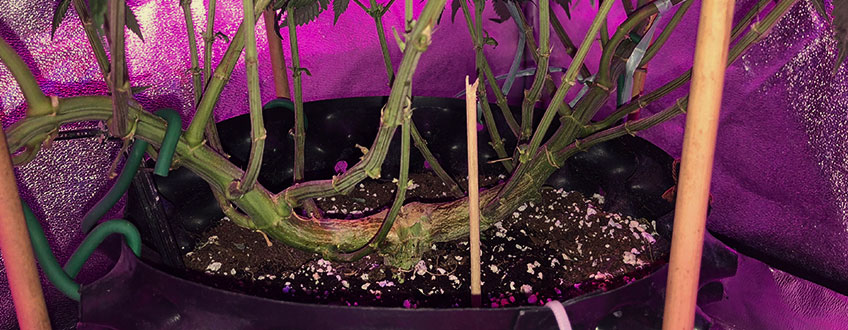
TOPPING & TRIMMING
SOG: More vigorous varieties or branchy cultivars like sativas and sativa-dominant hybrids, whose lateral branching may crowd the space too much, have their lower branches removed to encourage a thicker, more developed main bud and to increase light penetration into the whole grow. This also promotes healthy air circulation around the complete plant and the top of the growing medium.
ScrOG: Plants are topped early to promote branch growth, ready for training in several directions to fill the whole screen. Growth is encouraged above the screen only, and any vegetation below the screen is trimmed away as it will receive minimal light. This way, a plenum is developed below the screen to ensure air circulation encompasses the whole plant and the grow medium surface.
In both instances, transpiration from leaf surfaces and evaporation from the medium will always play their important roles in plant health.
IN THE END, IT'S ALL GOOD
Both of these low-stress training techniques have proven to be very successful for the domestic and commercial cannabis grower. They each have their advantages and make the most of the grow space on offer. Experimenting with both of these techniques will let you decide which one best suits your style.
Categories
Grow Cannabis With RQS


























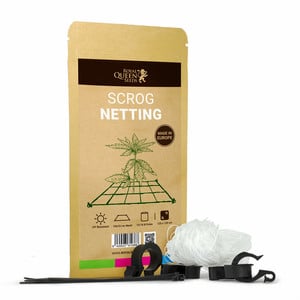
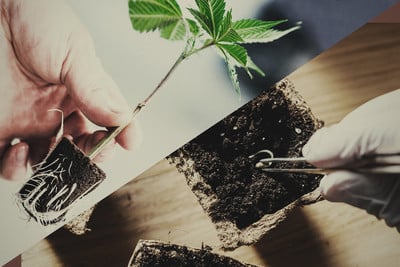
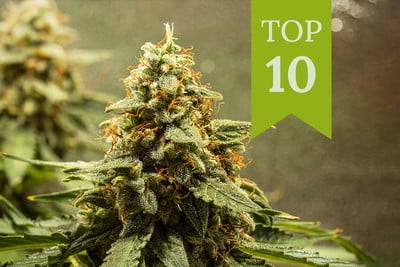
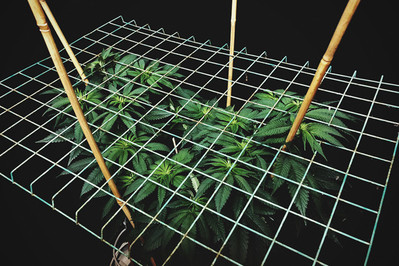
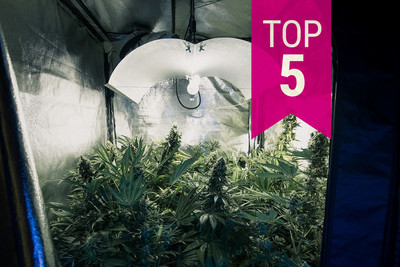
.jpg)







